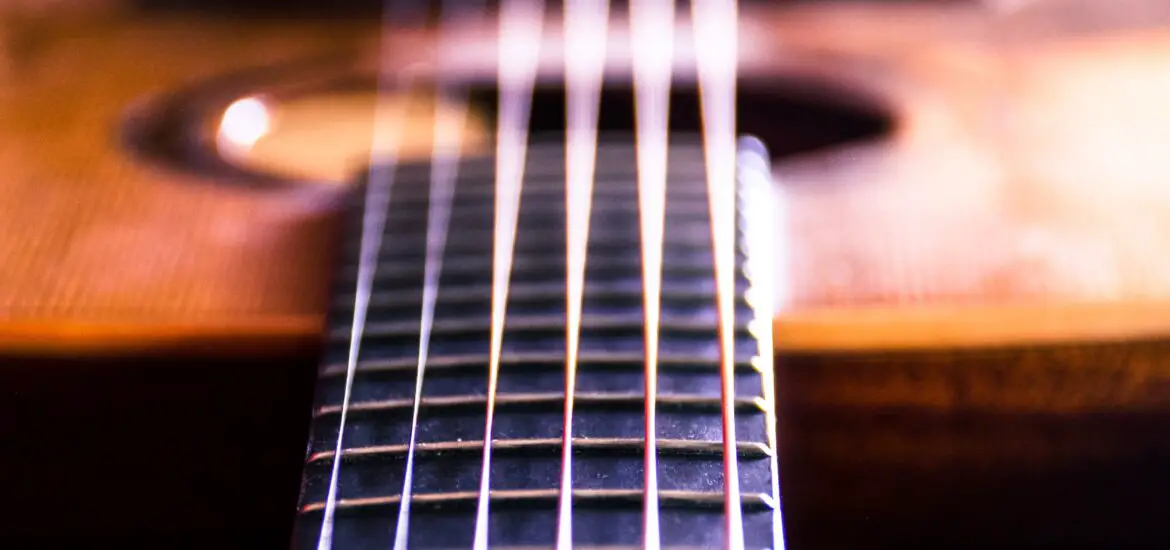If you’ve been exploring the world of guitars, you may have noticed that some guitars lack headstocks. This seemingly strange design feature is not accidental and has specific implications for both sound and playability.
In this guide, we’ll provide the answer to the question “Why do some guitars not have headstocks?”, the advantages and disadvantages of this design, and how it affects the guitar’s performance.

Why Are Headstocks Commonly Used?
The headstock is a standard feature on many guitars, both acoustic and electric. It serves multiple functions:
String Tension: The headstock holds the tuning pegs, which in turn hold the strings. This design helps distribute and maintain the tension across all strings, aiding in keeping the instrument in tune.
Ease of Tuning: With the tuning pegs easily accessible at the head of the guitar, it’s simpler to adjust the tension of each string individually, thereby tuning the instrument.
Aesthetic and Tradition: The headstock is often adorned with the logo or brand name of the guitar manufacturer. Its traditional design adds a familiar aesthetic many musicians appreciate.
Sound Resonance: Some argue that the mass of the headstock can slightly influence the sustain and resonance, although this is a much-debated point.
What Are Headless Guitars?
Headless guitars remove the headstock entirely, and the tuning mechanism is repositioned. Here’s what that means for you:
Tuning Mechanism: In headless guitars, you’ll typically find the tuning system located either at the bridge or at the bottom end of the body.
Unique Design: Some designs integrate the tuning system and the bridge into one unit, streamlining the construction.
Read more articles on guitars here – Guitar Questions: Get the Right Answers to Your Burning Questions
Why Do Some Guitars Not Have Headstocks?
Below, we talk about the advantages of headless guitars, and also the disadvantages…
Advantages of Headless Guitars
Let’s dive deeper into the perks of going headless:
Weight Reduction: The absence of a headstock means less wood and hardware, which ultimately makes the guitar lighter. This can be a boon for live performers or those who play for extended sessions.
Improved Balance: Less weight at the end of the guitar can improve the overall balance, making the guitar more comfortable to hold, especially when playing while standing.
Sustain: Some players note that the sustain—how long a note rings—can be better on a headless guitar, although this is a subjective claim and often depends on other aspects of the guitar’s construction.
Disadvantages of Headless Guitars
Going headless isn’t for everyone. Below are the disadvantages of headless guitars:
String Compatibility: Headless guitars often require double-ball-end strings or a specialized mechanism for using single-ball-end strings, which can be less convenient and more expensive.
Aesthetic Concerns: The modern look of a headless guitar isn’t everyone’s cup of tea. Some players miss the traditional design.
How to Choose the Right Guitar for You
Choosing between a headless and traditional guitar boils down to your needs and preferences:
Comfort: If you prioritize comfort and lightweight design, headless might be the way to go.
Tradition vs Innovation: If you’re a traditionalist at heart, you might find the absence of a headstock off-putting.
Playstyle: Think about your playstyle and setting. Will you be standing for long gigs, or are you mainly a bedroom player? The balance and weight could affect your decision.
Conclusion: Why Do Some Guitars Not Have Headstocks?
Understanding why some guitars do not have headstocks can help you make an informed decision when choosing your next instrument. Whether you go headless or stick with the classic design, both options have their own sets of pros and cons to consider.
